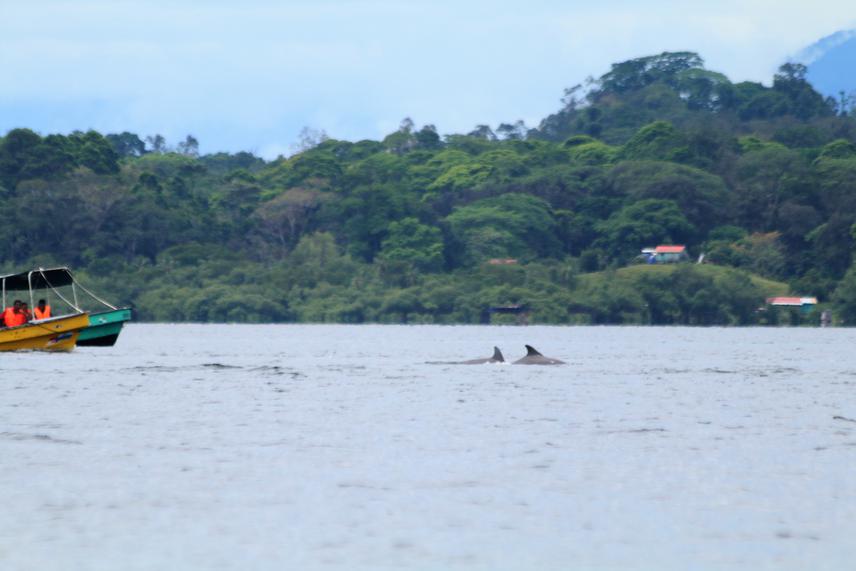Dalia Carolina Barragán Barrera
Other projects
11 Oct 2012
The Effect of Dolphin-Watching on Different Bottlenose Dolphin Ecotypes in Bocas del Toro (Panama): Studying Behaviour Responses Combined with Genetic Structure
13 May 2014
Studying Genetic Structure and Boat Disturbance on Individual Behaviour of an Isolated Coastal Population of Bottlenose Dolphins in Bocas Del Toro, Panama
20 Nov 2017
Studying the Ecological Isolation and Physiological Response to Anthropogenic Stressors of a Vulnerable Bottlenose Dolphin Population in Bocas Del Toro, Panama
30 Oct 2019
Studying the Physiological Response of Bottlenose Dolphins to Anthropogenic Stressors Related to Boat Traffic in the Archipelago of Bocas Del Toro, Panama
The bottlenose dolphin population of Bocas del Toro is genetic isolated from other populations in the Caribbean. The goal of this study is to generate information about the foraging ecology and to determine if heavy metal accumulation reported in the area may be affecting their health. Results of this work will compliment ongoing investigations and conservation efforts.

Boat approaching to dolphins. © Betzi Pérez
Bottlenose dolphins are widely distributed in all oceans, but some coastal population show some degree of genetic isolation. Particularly in the Caribbean the species shows a moderate-high level of genetic diversity, which supports the assumption that some individuals maintain genetic flow among Caribbean populations. However, population of bottlenose dolphins in Bocas del Toro (Panama), which shows site fidelity, is isolated from each other in the Caribbean. Genetic results using mtDNA show this population share only one haplotype not reported before in the Caribbean, and microsatellite results show this population is highly structured. These results suggest this population could be result of a founder effect, which could implies immunogenetic losses for dolphins. Moreover, this population is small (around 125 animals), highly philopatric, and holds the largest dolphin-watching industry in Panama. Consequently, these dolphins are vulnerable to disease-related morbidity or mortality, anthropogenic activities and climate change. Because of this situation, the International Whaling Commission Scientific Committee has presented four recommendations to the Government of Panama to regulate this situation.
The gap in genetic data is the major barrier to development of conservation management units for dolphins in Panama. In addition, analyses of foraging ecology of bottlenose dolphins in Bocas del Toro and their potential preys provide novel ecological information relevant for understanding the role of dolphins. Also because these dolphins are genetically isolated, analyses in the Major Histocompatibility Complex (MHC) will be conducted in order to establish if the animals have an immune system which may respond to diseases. Moreover, the high site fidelity of bottlenose dolphins in Bocas del Toro could support their role as sentinel species for monitoring spatial and temporal contaminants trends in Bocas del Toro, as in other regions of the world. In addition, it is well known that the exposure to pollutants, such as heavy metals, may increase the vulnerability of marine organisms to disease. Furthermore, female site fidelity in polluted sites could be a major concern since metal pollutants may pass from the tissue into the milk, and therefore into the newborn dolphins. With this project we will generate information about genetic connectivity, heavy metal levels, and genetic diversity of genes associated to immunological system. This information could be the key to define the appropriate Management Units, especially since recent studies have revealed that some coral reef sites in Bocas del Toro are being influenced by heavy metal pollution. Moreover, continuation of outreach activities is very important for conservation of this bottlenose dolphin population, and for this reason we are still promoting conservation activities in Bocas del Toro.